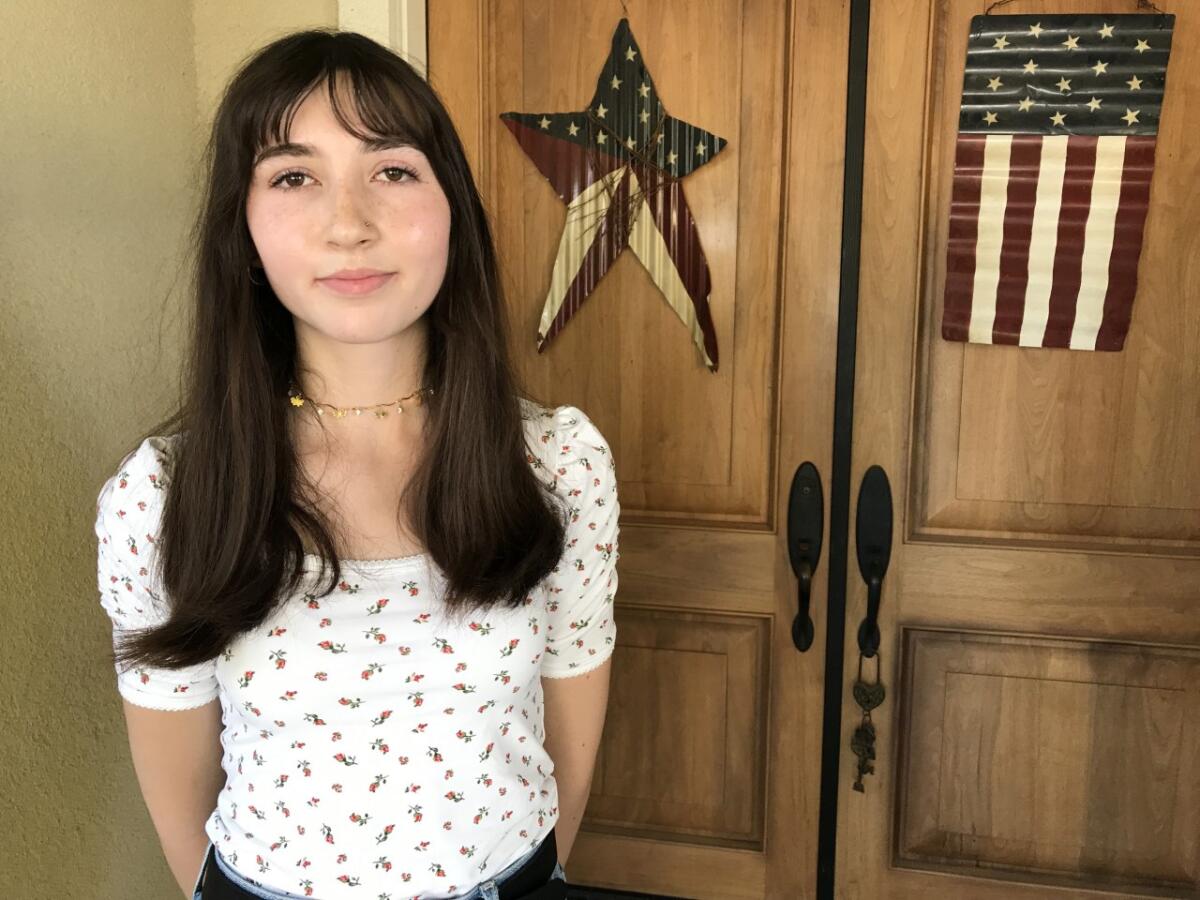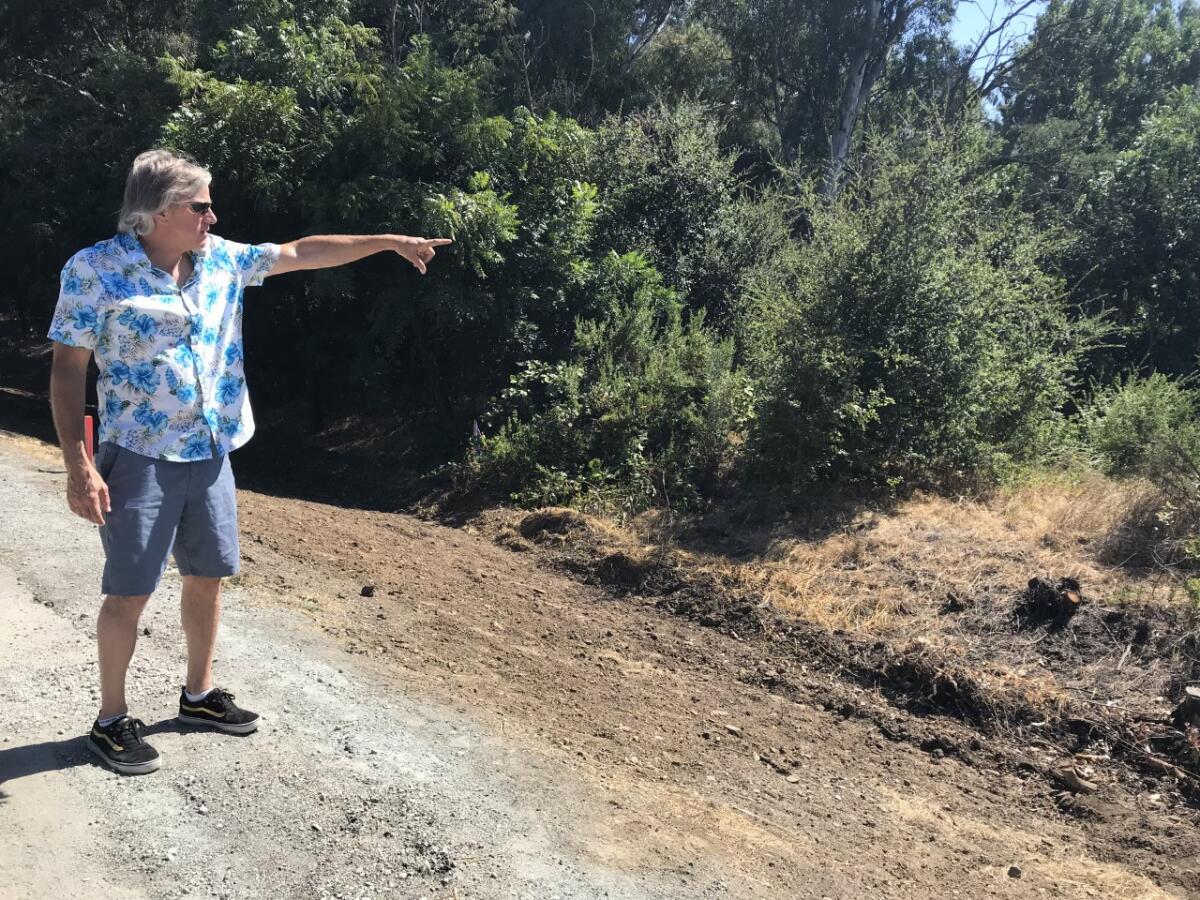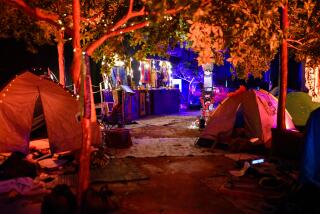Column: Gilroy Garlic Festival shooting rampage is awful but not surprising

- Share via
Gilroy, Calif. — It was not supposed to happen at the garlic festival, Gilroy’s beloved public celebration.
It was not supposed to happen at a country music festival in Las Vegas.
It was not supposed to happen during morning Shabbat services in Pittsburgh.
It was not supposed to happen in the middle of evening Bible study in Charleston.
It was not supposed to happen in a Parkland high school, or a Newtown elementary school.
It was not supposed to happen at countless other houses of worship, nightclubs and shopping centers.
But this is America.
No one is safe.
In America, mass shootings have become depressingly common.
No place is safe.
Which is why it was so discordant to hear the comment made by a woman who was taking a cellphone video of terrified festival goers in Gilroy: “Who’d shoot up a garlic festival?”
It doesn’t even take a wild guess: A white man, probably a young adult, with legal access to weapons he should never, ever have been able to buy.
Three innocent people lost their lives. A dozen sustained serious injuries.
Once again, a community is left reeling, grieving and begging for something to change.
But nothing ever does.
::
Gabrielle Sunseri, a 16-year-old incoming junior at Gilroy High School, was volunteering at the festival when the rampage began. Like so many American schoolchildren, she has been through years of rehearsing what to do when a someone starts shooting — “Code Red” drills.
And yet, she said, “I didn’t know what to do. My brain went stagnant. Nothing prepares you for when it actually happens.”
When the loud pops began, she said, she saw hundreds of panicked people stream past her food tent. Her school’s football coach ran into the tent and screamed for everyone to get down.
“I saw another volunteer playing dead. I saw her lie down and go limp,” Sunseri said. “That’s when I realized this was gunshots.”
When a dazed family walked by her tent, she tried to scream, Come inside!
No sound came out of her mouth.
“I didn’t realize until then how scared I was,” she told me as we sat in a sunny backyard in a gated subdivision a short drive from Christmas Hill Park, the festival site.
Sunseri was visiting the Thompsons, who, like many of their friends, volunteer at the festival to raise money for the Gilroy High School water polo and swim teams. Scott Thompson, 55, was just returning to the festival after a break when he heard the unmistakable sound of gun fire.
He had parked in a satellite lot, and was walking along the levee that runs along the east side of the park. He sprinted 200 yards toward the entrance, then slowed himself down, gathered his wits, and called his sons’ swim and water polo coach, who was still inside at their food stall. “He said, ‘Hey, I think it’s fireworks.’ I said, ‘No way. It’s firearms.’”
As Thompson neared the entrance gate, waves of police cars and emergency vehicles, lights ablaze, sirens blaring, passed him. Terrified families and teenagers were fleeing the park. He could have taken a dramatic video, one that may well have helped define the event in the public imagination, but Thompson said he decided not to pull his cellphone out. He did not want to risk glorifying such a tragedy; he did not want to have any part in tarnishing the city he loves.
“As the mayor said on TV this morning, this is a really tightknit community, there are generations of families in this town,” Thompson said. “The festival is how we all come together and see each other. Be communal. Get your garlic on.”
:
Sunseri ended up being herded into a freezer truck. Her adrenaline was pumping so fast, she barely felt the cold at first. About 50 people crammed in with her, and their panic was palpable, she said. “A group of middle school girls were bawling. Mothers with babies were crying. People were yelling, ‘Stop talking! There’s still an active shooter.’”
About 20 minutes later, a man yelled, “OK, police are here! If you want to leave, you can follow them at your own risk.”
“’At your own risk?’ When I heard that,” Sunseri said, “I was like hell no, I am not leaving this truck.”
But a few minutes later, the group did leave, and gathered on a playground just inside the perimeter fence.
It was still unclear what was going on.
“People were starting to freak out,” Sunseri said. “A mom was fighting with one of the volunteers. Little kids — like 7 years old — were making barricades out of white plastic folding chairs.”
Can you picture it?
Second-graders trying to make themselves safe against a rifle-toting gunman by piling up chairs?
Is this really the country we want?
::
I have heard the pro-gun talking points so many times, I could recite them in my sleep.
It’s not the guns, it’s the shooter.
Outlawing military style weapons will not stop people from obtaining them, or stop them from hiding the ones they already have.
It’s not about guns, it’s about mental health.
Only a good guy with a gun can stop a bad guy with a — well, you know the rest.
What we need here is a seismic cultural shift.
We need to do for guns what we did for drunk driving and cigarettes.
If we can legalize same-sex marriage in less than a generation, there is hope that we can shame the AKs out of the hands of gun lovers.
The American public already — and by large numbers — agrees that we need more restrictions on guns.
Most Americans believe we should have universal background checks, and a big chunk think that military-style semiautomatic rifles like the one used in Gilroy have no place in civilian life.
They surely have no place in civilian death.

More to Read
Sign up for Essential California
The most important California stories and recommendations in your inbox every morning.
You may occasionally receive promotional content from the Los Angeles Times.











